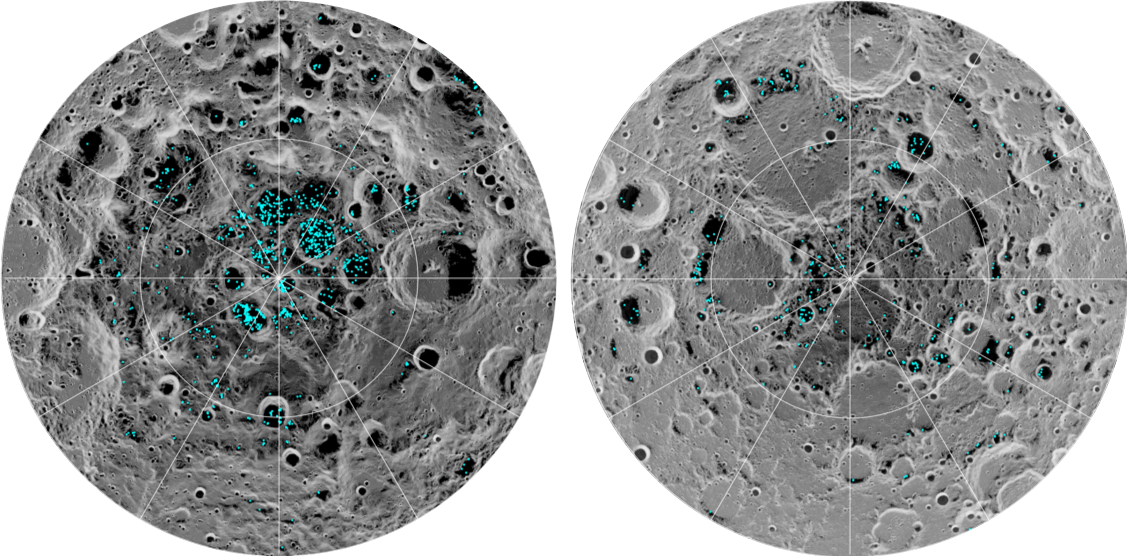Why it matters: With definitive proof of water ice on the surface of the Moon, the next logical step would be to send a rover to the region for further exploration. Unfortunately, NASA recently cancelled plans to send the Resource Prospector to our nearest satellite so it's anyone's guess as to when that'll happen.
Using data from NASA's Moon Mineralogy Mapper (M3) instrument, a team of scientists from NASA's Ames Research Center, the University of Hawaii and Brown University have definitively proven that water ice exists on the surface of the Moon.
Previous observations found indirect evidence pointing to the possibility of surface ice on the Moon but could have been credited to other phenomenon such as unusually reflective lunar soil. The M3 instrument was able to collect data about the reflective properties of ice and measure how its molecules absorb infrared light, thus allowing scientists to differentiate between solid ice and liquid water or vapor.
The newfound ice deposits are located at the Moon's poles. At the southern pole, most of the ice is concentrated in lunar craters where sunlight never reaches due to the small tilt of the Moon's rotation axis. In these regions, temperatures never climb above -250 Fahrenheit. At the northern pole, the ice is more widely but sparsely distributed.
NASA said that with enough ice sitting at the surface (within the top few millimeters), water could possibly be accessible as a resource for astronauts while exploring or during an extended stay on the Moon. In theory, it'd also be easier to access than the water previously detected beneath the surface.
